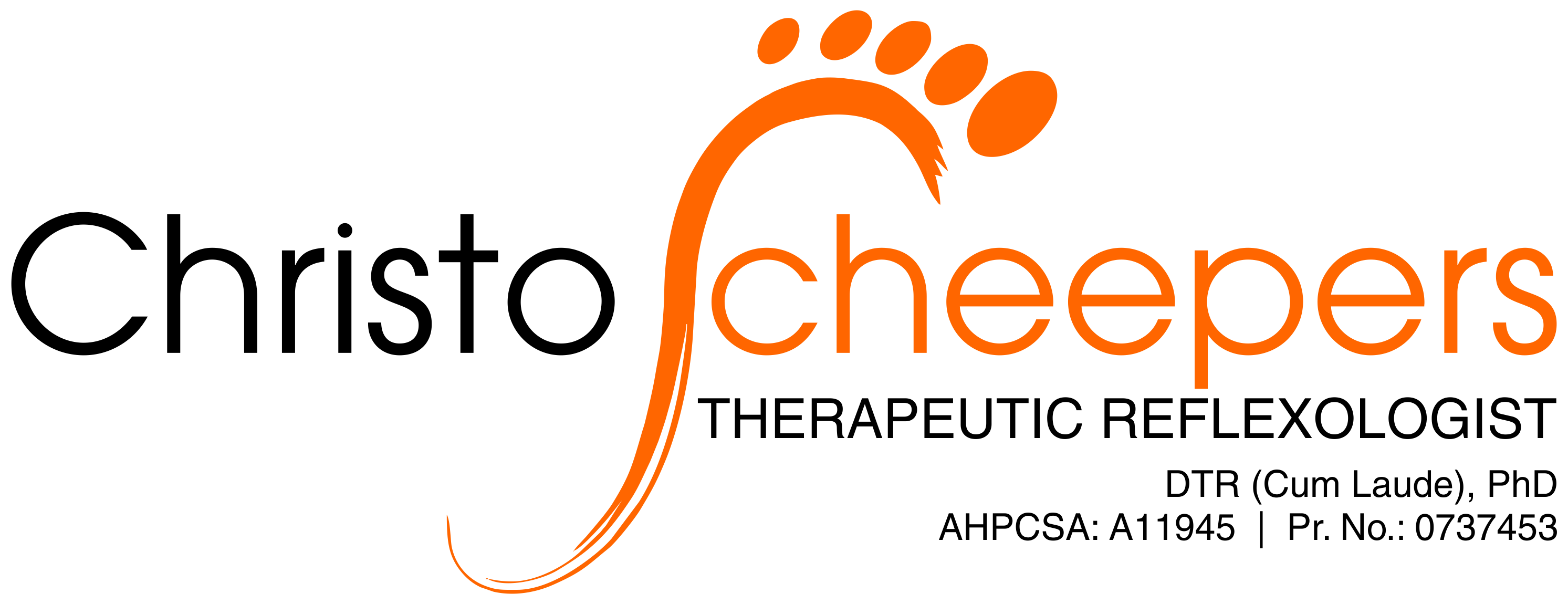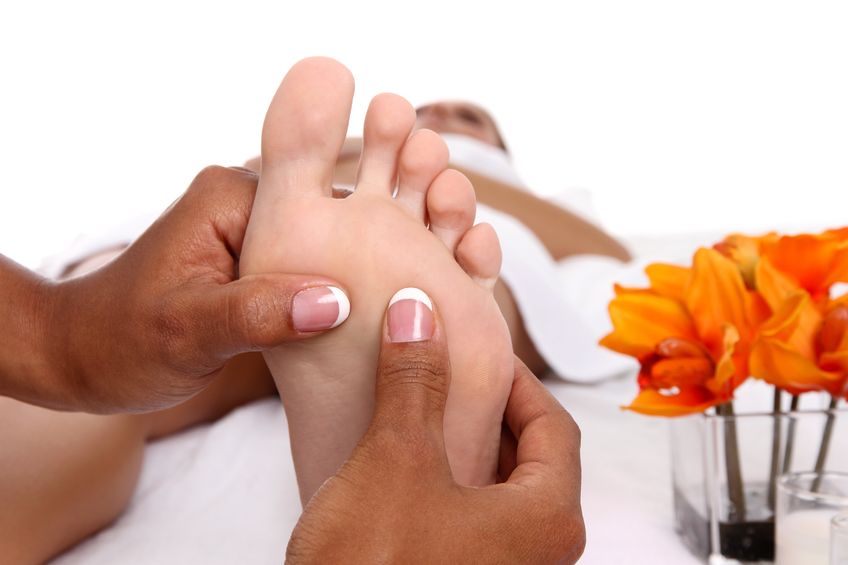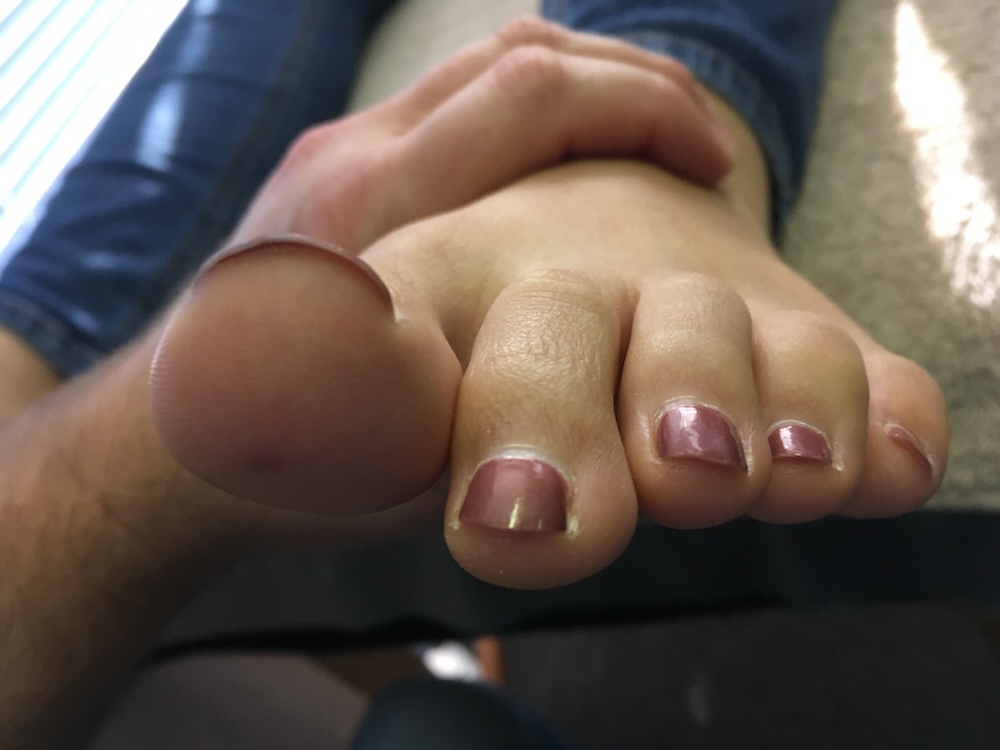In today’s post, we are considering different sensations that patients may experience during a Therapeutic Reflexology session. We always talk about benefits or outcomes of Therapeutic Reflexology but what patients experience during treatment is not often mentioned, until today.
LOCALISED SENSATIONS
Localised sensations may be experienced on the feet as the Therapeutic Reflexologist stimulates the reflexes (nerve endings) on the feet. Localised sensations may also occur on the hands when the therapist performs hand reflexology, or on the face during facial reflexology, or on the ears during auricular reflexology, or body during body reflexology, due to direct contact with the hands of the therapist, but for the simplicity of this post, we are focusing on foot reflexology. As the Therapeutic Reflexologist touches and stimulates the nerve endings on your feet, you may feel different sensations on the feet, depending on how sensitive your feet are. Some of the sensations may include skin-to-skin touch, tickling, tingling sensitivity, pressure, pain, satisfaction, pleasure, goosebumps, temperature changes, chills, or relaxation. Each person is different so what you experience, may be different from what another person experiences with the same form of touch or stimulation, so never compare yourself with another patient.
GENERALISED SENSATIONS
Some patients are more sensitive to sensory stimuli and as the nerve endings on the feet are stimulated, the person may experience generalised sensations all over the body, not only on the feet. These sensations are generalised because there is no direct contact on that specific part of the body; the touch and stimulation are on the feet, but the person experiences resultant sensations on different parts all over the body. These generalised sensations may include sensations of burning, tingling, sensitivity, shooting, painfulness, temperature changes, release, emotional, excitement, pleasantness, pressure, pleasure, relaxation, and many other sensations; each person is different.
It is always interesting to work with a patient that is very much in tune with her body because as specific reflexes are stimulated on the feet, she may indicate what she is experiencing on different parts of the body. For example, I once worked with a patient that indicated a painful sensation in the lateral abdomen during stimulation on the feet, while another experienced a pleasant tingling sensation in the shoulder, and another a relieving sensation in the back of the head and neck.
A patient once told me that I activated all her senses with the therapy because while busy with the Therapeutic Reflexology session, her feet became very sensitive to the touch, and she even jerked here and there as specific areas on her feet were extremely sensitive or ticklish; something that was not present prior to commencement with the treatment session. It further resulted in her experiencing sensations all over the body, just by touching certain areas on her feet; something normal within the field of Therapeutic Reflexology because the feet is a microcosm of the macrocosm, meaning that your entire body is represented on your feet due to the nerve endings and neural pathways, and by stimulating the areas on the feet, there is potentially a positive effect on the rest of the body.
Sensations may range on the one side of the spectrum from sensitive to even slightly painful while on the other side of the spectrum it may be perceived as pleasant to even pleasurable. Just think about having a tense neck due to incorrect posture and you are getting a massage to rectify the situation; it may be painful (often described as a good pain) resulting in a pleasurable feeling of relief. Therapeutic Reflexology is very similar but has the added benefit that local pressure is transported throughout the body to potentially provide rebalancing in all areas of the body.
In Therapeutic Reflexology, there are two aspects to consider, namely (1) Intentional Sensations, and (2) Unintentional Sensations.
INTENTIONAL SENSATIONS
When a patient is dealing with specific conditions, the Therapeutic Reflexologist may want to induce specific sensations during a treatment session, so by making use of specific treatment protocols, the intent is to create specific outcomes.
For example, if the patient is experiencing extreme pain, the idea is to use specific treatment protocols that may hopefully help reduce the pain. Therapeutic Reflexology is a holistic treatment, meaning we do not treat specific conditions, and we stimulate the entire foot and not only one part of the foot, but after doing so, specific reflexes may be focused on to provide additional stimulation in certain areas. If a patient thus experiences abdominal pain, the idea in Therapeutic Reflexology is to stimulate all areas on the feet to assist the entire body to potentially rebalance, but then additional stimulation may be provided in the abdominal reflexes to hopefully provide relief from the pain. Overall, this approach is very successful, although each patient experiences treatment differently.
For me it is always encouraging when working with a cancer patient that is receiving chemotherapy or radiation and they experience the side-effect of numbness in their feet, and because of commencement with Therapeutic Reflexology, they indicate that they are experiencing sensations in their feet.
When working with a pregnant patient and she wants to try Therapeutic Reflexology to induce labour naturally, it is always encouraging when the patient indicates during or directly after treatment that sensations are experienced in the pelvic area because it may potentially indicate a positive outcome.
These intentional sensations are part of Therapeutic Reflexology where nerve endings on the feet are stimulated with the hope that it will have beneficial results in specific areas of the body and when the patient experiences sensations in those very areas, it indicates a promising outcome.
UNINTENTIONAL SENSATIONS
Sometimes the Therapeutic Reflexologist is doing a general treatment session where all the reflexes on the feet are stimulated without using any treatment specific protocols, for example, when a patient just wants to experience Therapeutic Reflexology or wants to relax due to dealing with high stress levels. The purpose is merely to decrease stress and to induce relaxation throughout the entire body, but some patients may experience unintentional sensations.
These unintentional sensations may be experienced all over the body and promotes an overall sense of wellbeing, or euphoria, which may be described as the ultimate form of relaxation with the accompanying sensations of deep relaxation. It is not strange that when patients experience such deep relaxation, they may fall asleep during a treatment session and “snore away”.
Sometimes patients feel nothing other than the localised touch on the feet. There is no prescriptive format and each person is different.
BASIC REASONS FOR EXPERIENCING SENSATIONS
Therapeutic Reflexologists work on the reflexes (nerve endings) on the feet (and sometimes other body parts), so by stimulating the nerve endings, impulses are purposefully generated and conveyed along the nerves, and it may be felt throughout the entire body as it is transported along the different nerves. It is simple to understand: If I touch your foot, you feel it due to an impulse being send along the nerves to the spine and up to the brain telling you that I am touching your foot. Similarly, Therapeutic Reflexology stimulates nerve endings to generate such impulses travelling across the body.
Therapeutic Reflexology increases circulation and blood blow in the body which may cause certain sensations to be experienced. Furthermore, Therapeutic Reflexology is a rebalancing treatment, thus assisting the body’s own innate healing ability to attempt to rebalance whatever is out of balance; that includes the hormones in the body and may result in certain sensations.
When the body is highly stressed, it is in a heightened state (fight-or-flight response from the sympathetic nervous system) which means there are probably higher levels of adrenaline and cortisol in the body. As Therapeutic Reflexology induces relaxation and helps the body rebalance these excess hormones, you may become more aware of your senses as the body enters a state of relaxation (rest-and-digest response from the parasympathetic nervous system); as you become more aware of your senses, you may experience various sensations.
CONCLUSION
The human body is fascinating and during Therapeutic Reflexology, different sensations may be experienced locally on the feet but also generalised to the rest of the body. Be aware that it may happen and you may feel it, however, some people never feel it and merely enjoys the absolute relaxation provided by a good Therapeutic Reflexology session.
Some patients are verbal about the sensations they experience while others just want to relax and are not necessarily telling the Therapeutic Reflexologist about the sensations being experienced. Whichever patient you are, do not compare yourself with anyone else, just be yourself while enjoying the treatment and the ultimate form of relaxation, whether you experience any specific sensations or not!
—
Christo A. Scheepers: Therapeutic Reflexologist
DTR (Cum Laude), PhD
AHPCSA: A11945
Pr. No.: 0737453
Tel. 072-800 7243


